Dish Cake, Blaten Küchlin
This week Fiona Menzies has a go at ‘Dish Cake’.
Ein guten theil eyer klopft wol in einer blaten, auch milch darunder, mach mit saltz vnd mäl ein zarteβ teiglin shüt heissen aucken in ein supen blaten, stell die blaten auf ein haffen voll heissen wasser, glut darunder daβ das wasser koche, vnd der teig auch koche, den teckel darauf, so er wol hert gekochet ist, ab den haffen, vnd las ihn erkalten, hawe shnitn einer fingerβ dicke vβ den teig, haw shlitzlin darin daβ sie warden wie ein hirtzen förnli, dan back sie algemach im aucken, in ein blaten gethan, vnd zücker darüber.
Beat a good number of eggs in a bowl, add milk, make a soft dough with salt and flour, place hot butter in a soup dish, place this dish on a pan of hot water, put on the fire so that the water simmers and the batter cooks, put a lid on it so it is well cooked, take off the water and let it cool, cut finger-width strips out of the dough, cut notches in these so they are like a [shepherd’s crook], then cook in hot butter, put in a bowl and cover with sugar.
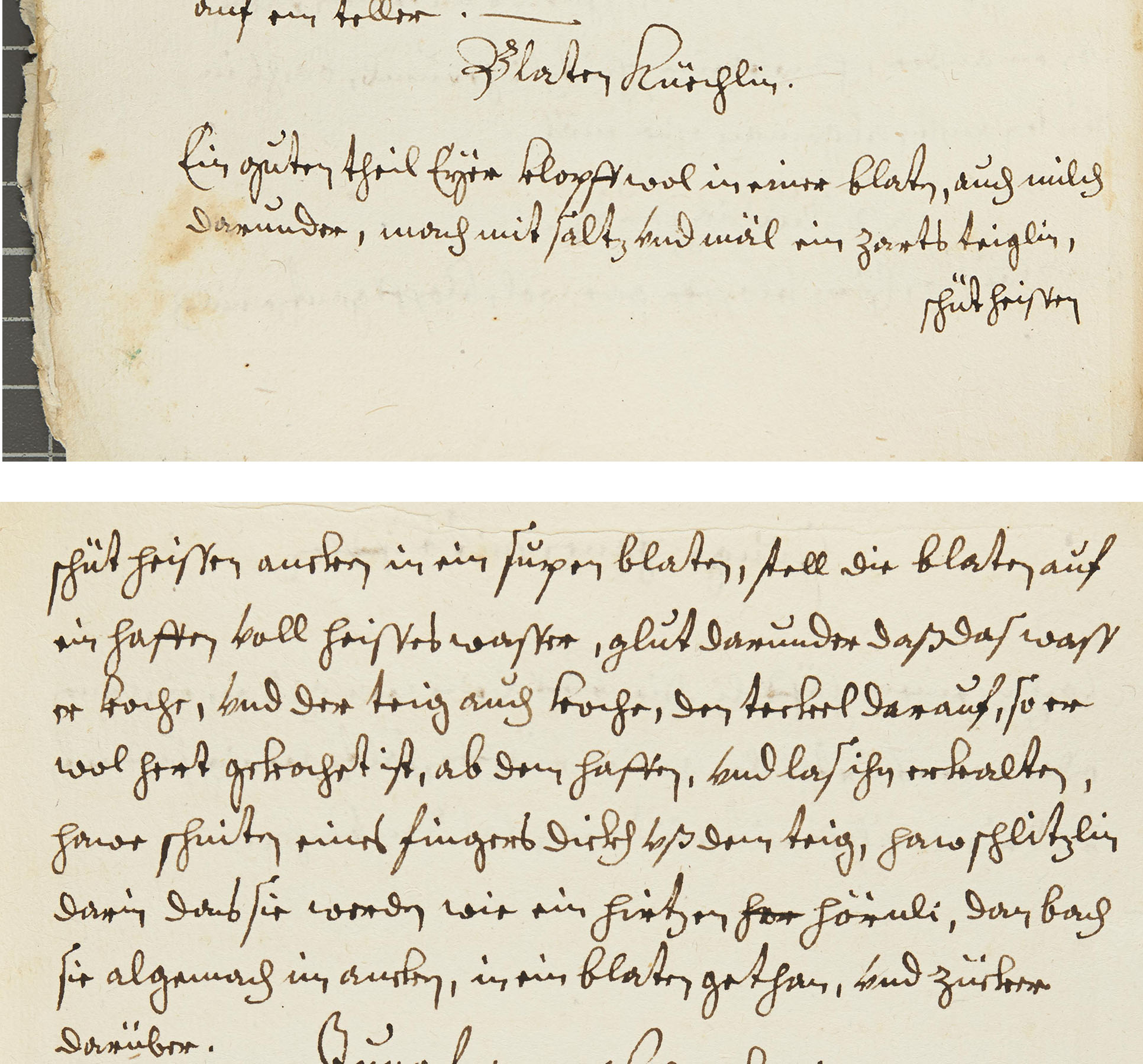
For me, picking a recipe from this cookery book was not too difficult. The savoury dishes looked rather imposing (I don’t have the stomach to remove the beaks off larks or the fire power to place a quarter sheep on a spit), but I do like cake! After that quick process of elimination I settled on a recipe for a cake I recognised, but had a baking method I had not seen before. I chose “Dish Cake.”
Dish cake stood out for a number of reasons; the vagueness of the recipe, the alternative baking method, and an interest in what the finished cake would look like.
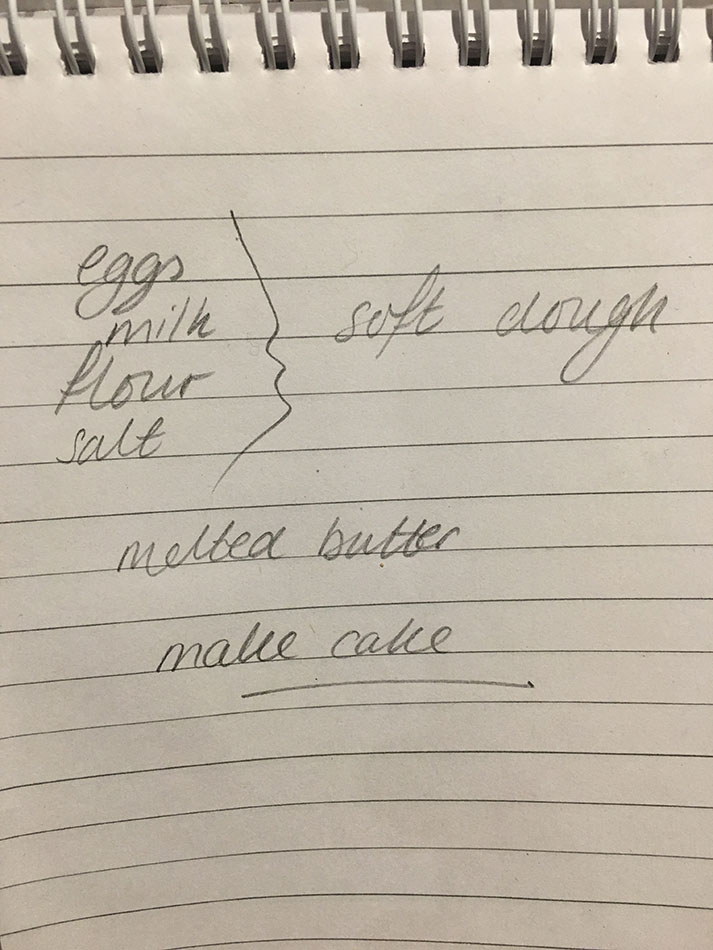
The recipe starts with a phrase that would strike fear into the hearts of any ‘Bake Off’ contestant doing the technical challenge, “Beat a good number of eggs.” What is a good number of eggs? Are we feeling decadent and want to use six eggs for a special dinner party or are we feeling frugal and stick to one? I chose to use two eggs, the only reason being that, that is how many I use when I make an omelette.
I continued the recipe as I would an omelette and beat the eggs and milk together. I then began adding the flour as I would if I were making pancakes. This is when I discovered a contradiction in the text. The recipe initially asks to make the mixture into a “soft dough”, which to me would suggest a texture like dough for a bread, however further on in the text, it refers to the mixture as “batter”, which sound like a pancake. I tried this recipe twice. The first time I added enough flour so it looked like bread dough. The finished result was something that felt and tasted like Playdoh! On my second attempt I went for the middle ground and made a batter which I felt was too thick for pancakes, yet too thin for bread.
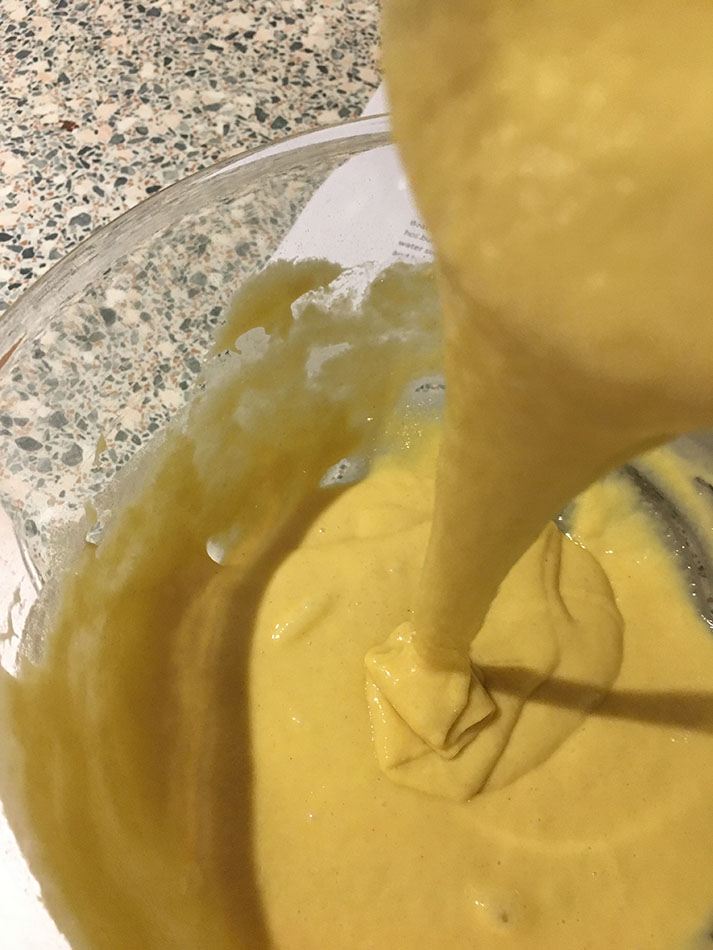
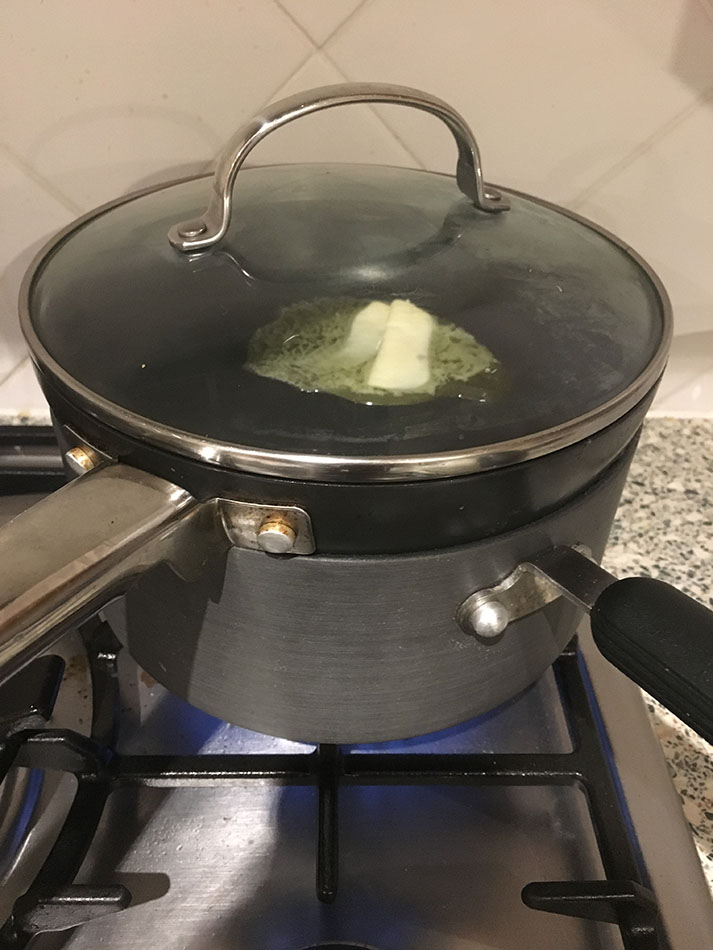
The next issue was the baking method. The recipe says “place hot butter in a soup dish, place this dish on a pan of hot water, put on the fire so that the water simmers and the batter cooks, put a lid on it so it is well cooked.” I used a frying pan over a pot of boiling water on the stove, the same basic method I would use to melt chocolate. I was sceptical at first thinking the heat from the water would not penetrate the thick base of a pan, but the butter melted quickly making me confident this might work. I then poured the batter into the pan, put the lid on and left it to cook. At this point I am sorry to say I went off and made my own tea so my time management skills flew out the window, but it takes as long as it does to boil some rice and to check how your vegetables are roasting.
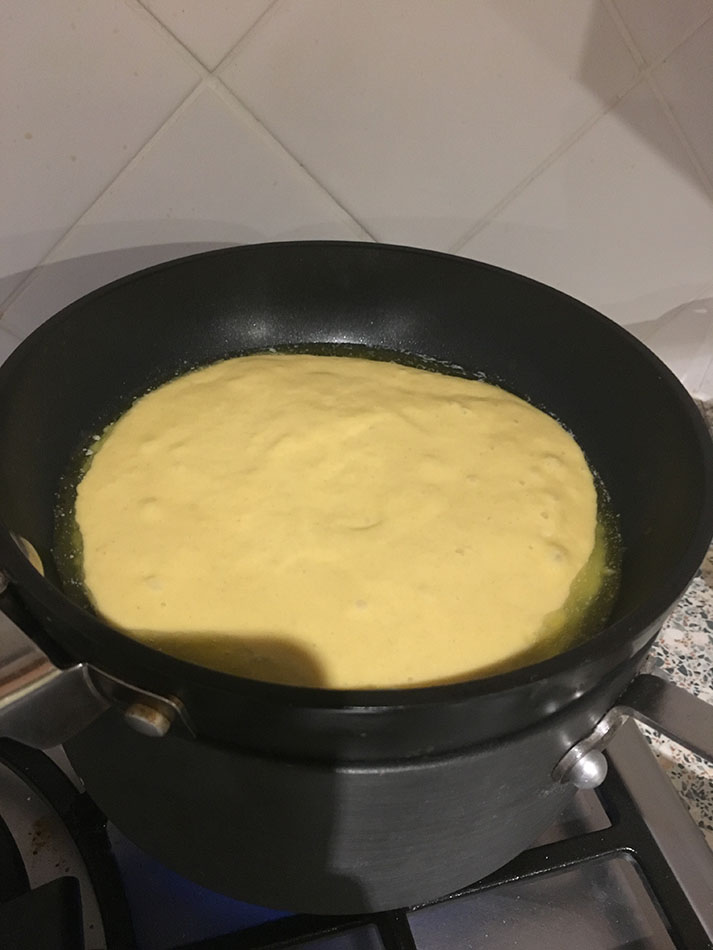
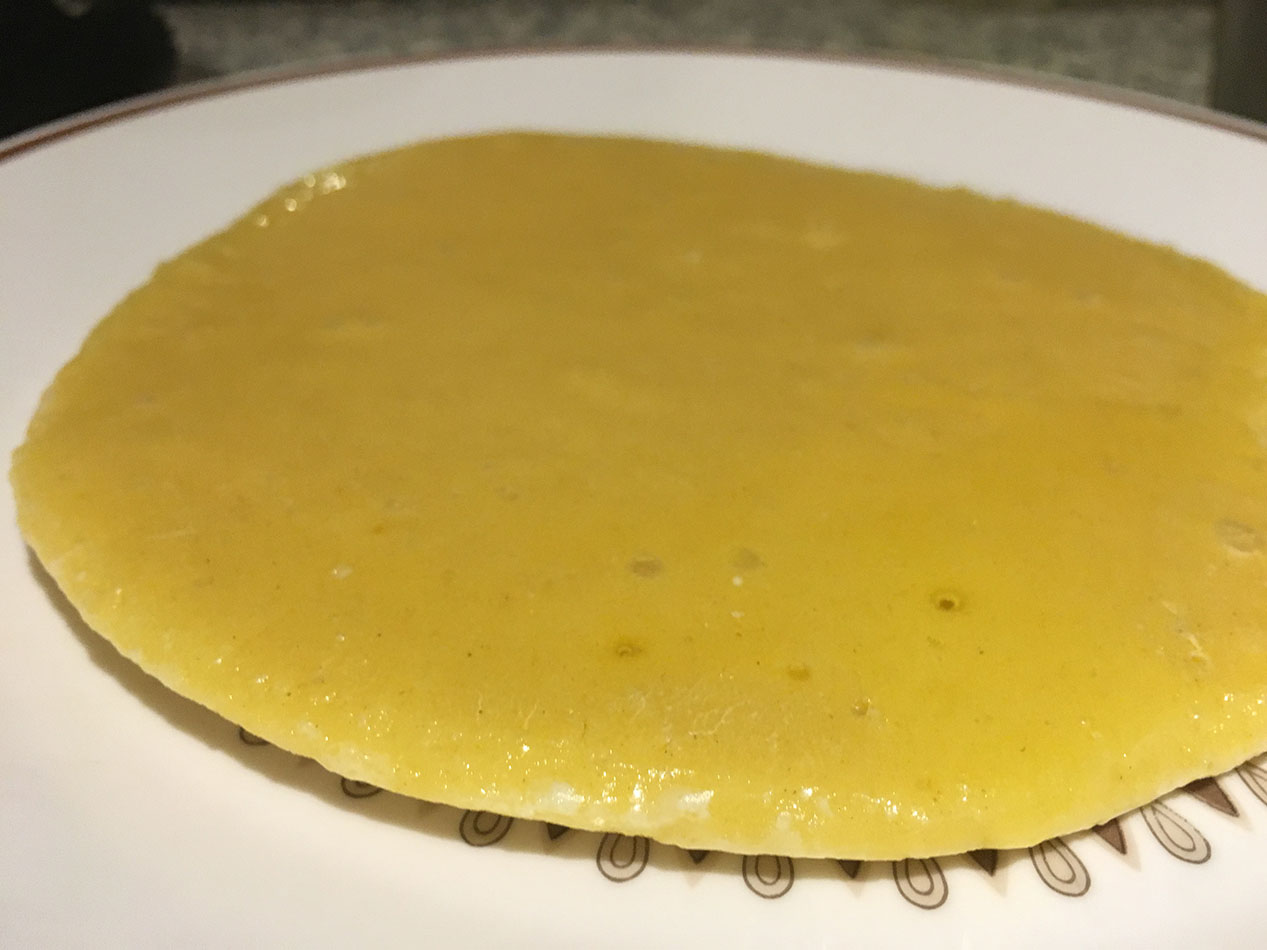
The cooked mixture had a solid appearance and was slightly tacky to touch. I left it to cool for a while (as long as it took to eat my tea). The instructions then ask you to “cut finger-width strips out of the dough, cut notches in these so they are like a [shepherd’s crook]”. I cut the strips, but because of the texture of the mixture I couldn’t work out how to shape the shepherd’s crook (this could be a point where I may have got my measurements or timing wrong. If you can shape it into a shepherd’s crook, please let me know). I cut notches into the mixture as I would onto bread dough before putting it in the oven. My reason for doing so was thinking the notches will take in some of the sugar during the final step. I then fried the strips in hot butter which made the mixture turn into something not too dissimilar to French toast. To finish, I put the dish cake into a bowl and mixed with caster sugar.
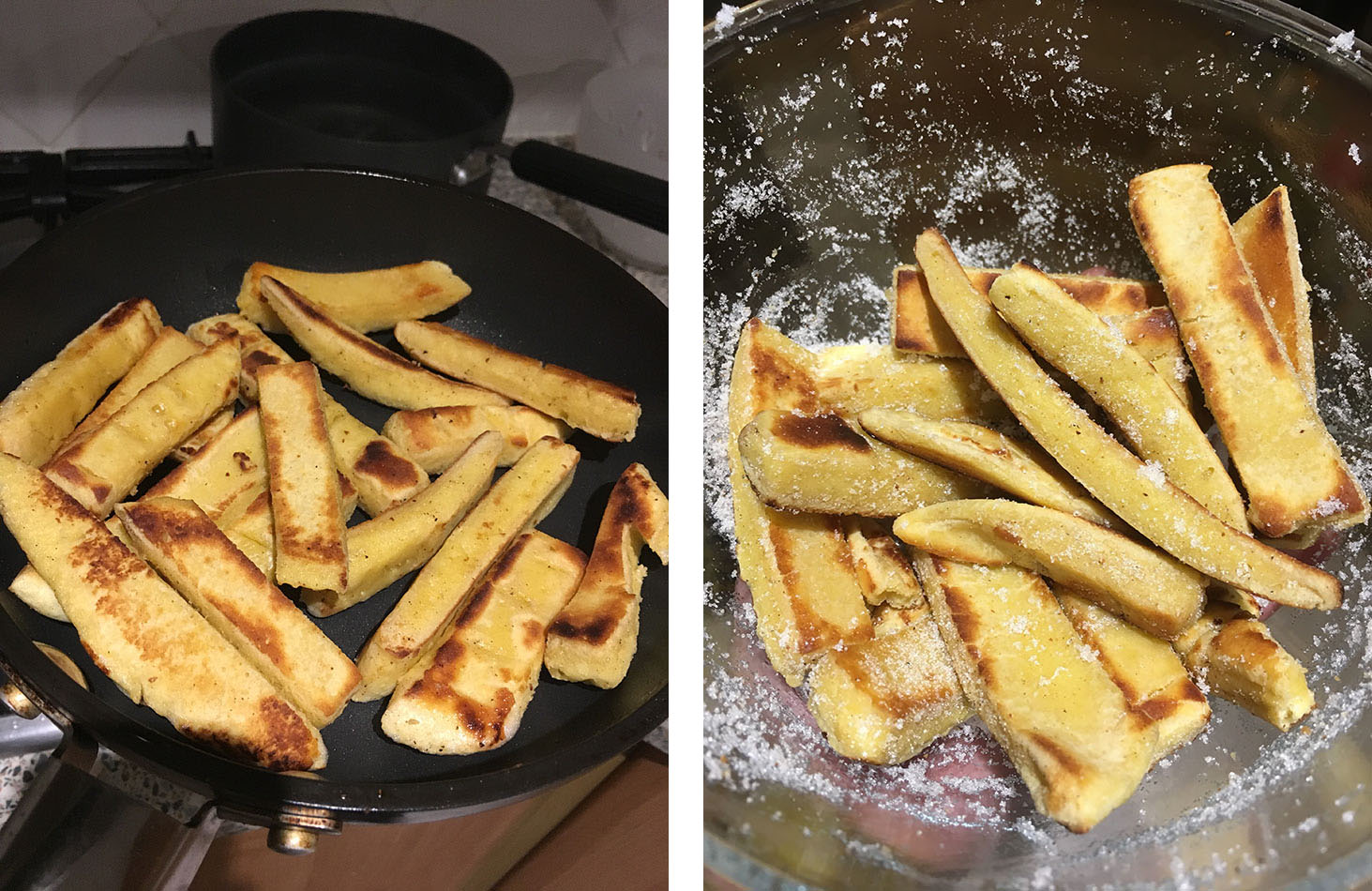
Fresh out of the pan, dish cake was essentially a very thick pancake, and wasn’t too awful. From the recipe tasters in Special Collection, the general opinion of the dish cake was that it was indeed just a thick pancake with one review being, “I liked it – a nice thick pancake with lots of sugar.”
I think the dish cake was a success and easy to follow. It has made me feel a bit more adventurous to try something else in the recipe book. Feel free to try out the recipe with your own measurements and techniques. Maybe a squeeze of lemon or a dollop of chocolate spread would add to it?
Fiona Menzies
Project Archivist
[…] via Dish Cake, Blaten Küchlin — Echoes from the Vault […]